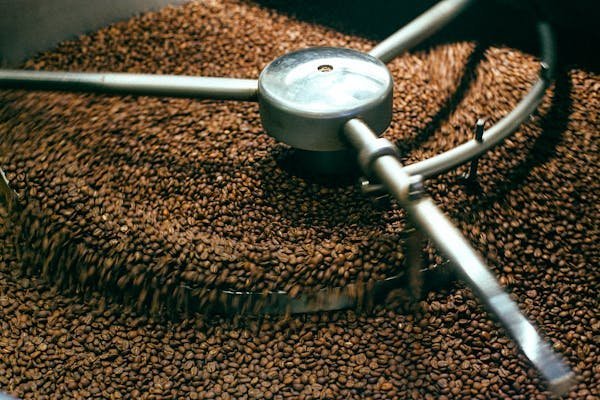Coffee Blends: Exploring Flavors, Techniques, and Benefits
Discover the world of coffee blends, their unique flavors, and how to choose the perfect one for your taste. Learn expert tips on blending coffee beans for a rich and balanced brew.

Introduction
Coffee blends have long been cherished by coffee enthusiasts for their rich and complex flavors. Unlike single-origin coffee, which comes from one specific region, coffee blends combine beans from different origins to create unique taste profiles. This artful mixing allows roasters to enhance body, balance acidity, and introduce complementary flavors that cater to various palates. Whether you’re a casual coffee drinker or a dedicated connoisseur, understanding coffee blends will help you choose the perfect cup for your taste preferences.
What Are Coffee Blends?
A coffee blend combines beans from different regions or varieties to create a well-balanced and flavorful cup. Roasters carefully select and mix beans that complement each other, enhancing the overall taste profile. Blend coffee beans thoughtfully to achieve the perfect harmony of acidity, sweetness, and body, resulting in a brew that is greater than the sum of its parts.
Types of Coffee Blends
-
House Blends – Signature blends created by coffee shops and roasters, often balanced and smooth.
-
Espresso Blends – Designed to produce a rich, crema-heavy shot with strong flavors.
-
Breakfast Blends – Light to medium roast blends with bright acidity and a smooth finish.
-
Dark Roast Blends – Deep, bold flavors with chocolatey and caramelized notes.
-
Seasonal Blends – Limited-time blends that highlight flavors of the season, such as pumpkin spice or holiday spices.
Why Choose a Coffee Blend?
Blends offer consistency and versatility, making them ideal for a variety of brewing methods, including espresso, drip, and French press. They provide:
-
Balanced Flavor – A well-blended coffee ensures a smooth, rounded taste.
-
Customizability – Roasters can tweak blends to meet customer preferences.
-
Availability – Unlike single-origin coffee, blends are more consistent year-round.
How Are Coffee Blends Created?
Creating the perfect blend requires skill and experience. Roasters analyze flavor profiles and roasting levels to achieve the desired outcome. The process typically involves:
-
Selecting Beans – Choosing beans with complementary characteristics.
-
Roasting Separately or Together – Some beans are roasted individually before blending, while others are blended before roasting.
-
Testing and Adjusting – The blend is tested for balance and adjusted accordingly.
How to Brew the Perfect Coffee Blend
Different brewing methods bring out unique characteristics in coffee blends. Here are some popular methods:
1. Drip Coffee Maker
-
Use medium-ground coffee.
-
Brew at 195-205°F for optimal extraction.
2. French Press
-
Use coarse-ground coffee.
-
Steep for 4 minutes, then press slowly.
3. Espresso Machine
-
Use fine-ground coffee.
-
Brew under 9 bars of pressure for a strong, rich shot.
4. Cold Brew
-
Use coarse-ground coffee.
-
Steep in cold water for 12-24 hours for a smooth, low-acid brew.
Understanding Flavor Profiles in Coffee Blends
Each blend has a unique taste profile depending on the bean selection. Some common flavor notes include:
-
Fruity & Bright – Beans from Ethiopia and Kenya.
-
Nutty & Chocolatey – Beans from Brazil and Colombia.
-
Earthy & Spicy – Beans from Sumatra and India.
The Role of Roast Levels in Blends
The roast level significantly impacts the final flavor of a blend:
-
Light Roast – Preserves original bean flavors, often floral and fruity.
-
Medium Roast – Balanced with caramel-like sweetness.
-
Dark Roast – Rich, bold, and smoky.
Choosing the Right Blend for Your Taste
Selecting the right blend depends on your flavor preferences:
-
If you enjoy bright acidity and fruitiness, opt for a light roast blend.
-
If you prefer balanced and smooth, try a medium roast blend.
-
If you love bold, smoky flavors, go for a dark roast blend.
Blend Coffee Beans for a Customized Experience
If you enjoy experimenting, try blending coffee beans at home. Start with beans that have complementary flavors, such as a bright Ethiopian with a chocolatey Brazilian. Adjust the ratios to find your perfect balance.
Conclusion
Coffee blends offer endless possibilities for flavor exploration, providing a balance of taste, aroma, and body. Whether you prefer a rich espresso blend or a smooth breakfast blend, understanding how blends are crafted allows you to appreciate the complexity behind every cup. By experimenting with different brewing methods and roast levels, you can unlock the perfect blend to suit your preferences.
FAQs
1. What is the difference between single-origin coffee and coffee blends?
Single-origin coffee comes from one region, while blends mix beans from different areas to create a more balanced flavor profile.
2. Are coffee blends better than single-origin coffee?
Neither is inherently better; it depends on personal preference. Blends offer consistency, while single-origin coffee highlights unique regional flavors.
3. Can I create my own coffee blend at home?
Yes! Experiment with different beans, roast levels, and ratios to find a flavor combination that suits your taste.
4. Do coffee blends contain more caffeine?
Caffeine content varies by bean type and roast level, but blends generally contain similar caffeine levels to single-origin coffee.
5. What is the best way to store coffee blends?
Store in an airtight container in a cool, dark place to preserve freshness and flavor.
What's Your Reaction?












